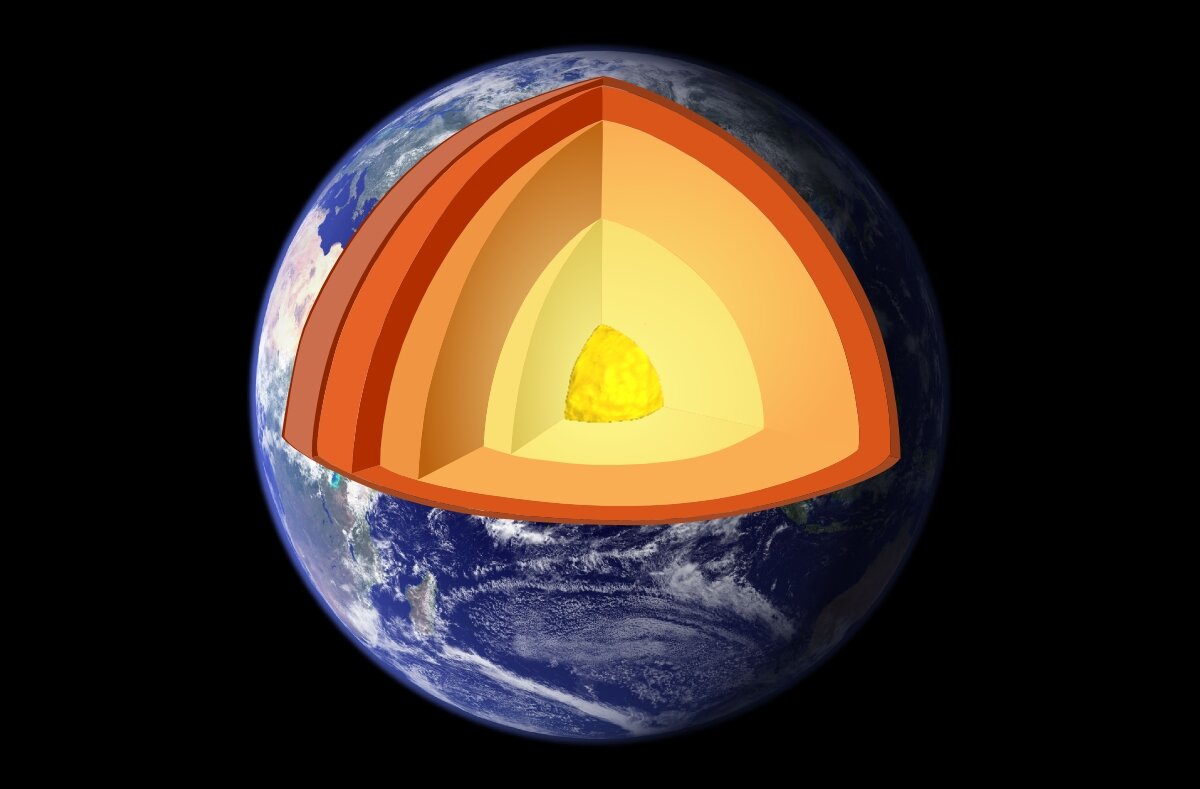Although we’ve known so far that Earth’s inner core is solid, it probably isn’t quite so.
New research based on faint echoes of seismic waves bouncing back from the planet’s depths back to Earth’s surface suggests that the inner core is more diverse than previously thought. The findings suggest that the inner core, which is growing by about one millimeter per year while the liquid outer core solidifies, may have grown faster during earlier periods of Earth’s history.
What’s more, some of the liquid iron may have been trapped inside the solid core, said the study’s lead author Keith Cooper, a seismologist at the University of Utah who was live science quoted.
“A long time ago, the inner core grew very rapidly,” he explained.
“It has reached equilibrium, and after that it grows much more slowly. Meanwhile, not all of the iron has become solid, so it is possible that some liquid iron is trapped in it.”
The Earth’s inner core is a solid ball made primarily of iron and nickel. This inner core, about 2,440 kilometers in diameter, spins inside the outer core, which is a molten furnace of iron and nickel. This continuous vortex creates the planet’s magnetic field.
Over time, the outer core gradually crystallized, but scientists know little about how fast this process happened, which also raises questions about the state of Earth’s magnetic field over time.
There is no way to directly access the core, so Cooper and his team used data from 20 seismometers designed to measure earthquake waves and monitor nuclear weapons tests. They focused on waves generated by earthquakes of magnitude 5.7 or greater, large enough that their vibrations reach the inner core and send faint echoes back to the seismometer. During the research, data from 2,455 such earthquakes were examined.
“The signal that comes from the inner core is very small,” Cooper said.
“It’s about one nanometer in size. What we’re doing is looking for a needle in a haystack. So it’s very difficult to notice these echoes and reflections.”
The most important finding, published in Nature on July 5, is that the composition of the core is “heterogeneous,” meaning diverse. In other words, the inner core did not solidify uniformly and consisted of patches of different textures.
“For the first time, we have confirmed that this type of heterogeneity is ubiquitous within the inner core,” Juaning Pang, a postdoctoral researcher at Cornell University who conducted the research as a postdoctoral fellow at the University of Utah, said in the release.
Seismic waves propagate more as they go deeper into the core, indicating that variance increases near the center of the Earth. Cooper added that this may be related to the rate at which the heart hardens over time.
This might also be interesting:












































